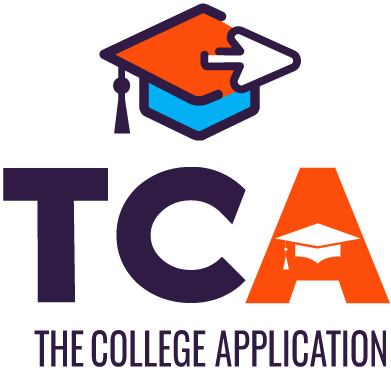The 529 plan, named after Section 529 of the U.S. Internal Revenue Code, is a tax-advantaged investment vehicle designed to encourage saving for the future higher education expenses of a designated beneficiary.

In simpler terms, it’s a financial account set up specifically to save money for college, university, or other eligible post-secondary educational institutions.
It’s also referred to as a Qualified Tuition Program (QTP).
Main Types of a Section 529 Plan
The 529 plan is available in two distinct types:
1. Education Savings Plans
This version of the 529 allows you to open an investment account to save for the beneficiary’s future qualified higher education expenses, which may include tuition, mandatory fees, room and board, and required books and supplies.
The account earnings grow on a tax-deferred basis, and withdrawals for qualified education expenses are exempt from federal tax.
This means that the money in the account is not taxed as it grows, and when you take it out to pay for these education expenses, it won’t be taxed by the federal government either.
2. Prepaid Tuition Plans:
These plans allow you to purchase units or credits at participating colleges and universities (usually public and in-state) for future tuition and mandatory fees at current prices for the beneficiary.
It’s akin to paying for a college education at today’s prices for attendance at a future date — a practical choice considering that college tuition tends to increase annually, and usually climbs higher than the rate of inflation.
The biggest demerit of Prepaid Tuition Plans is that the funds can only be used for tuition, and will not cover other costs of attendance.
Funds from a 529 savings plan can be used at any eligible educational institution, which includes most colleges and universities, vocational schools, and postgraduate programs across the United States and even some international institutions.
.
Education savings plans aren’t just for college. They can also cover up to $10,000 each year for K-12 tuition, whether the school is public, private, or religious.
They also cover costs for certain apprenticeship programs and can help pay off student loans, with a limit of $10,000 in total per beneficiary.
The plan’s flexibility extends to the beneficiary designation — if the original beneficiary doesn’t need the funds for educational purposes, you can change the beneficiary to another eligible family member without losing the plan’s tax advantages.
Who Can Open a 529 Savings Plan?
Anyone with a goal to save for education costs can open a 529 plan.
Whether you’re a parent planning for your child’s future, a grandparent contributing to your grandchild’s education, or an adult preparing for your own educational journey — there’s no barrier.
You don’t need a high income, there’s no age limit, and you don’t have to be related to the person you’re opening the plan for.
Essentially, if you’re looking to invest in someone’s educational future — maybe it’s your kid, a friend’s child, a niece, nephew, or even yourself — you’re eligible to start a 529 plan.
What if you are the Student?
Any student 18 and older can open a 529 in their own name. It’s particularly handy for adults considering grad school or a career shift.
Granted, the growth time for the savings will be much shorter, but the tax benefits (deductions or tax credits) still apply.
Here’s a Pro Tip!
If you’re eligible for a tax deduction, consider running your tuition payments through your 529 plan to grab that extra tax savings!
Are 529 Contributions Tax Deductible?
Contributions to 529 plans, while made with after-tax dollars, attract no federal tax deductions.
However, the investment grows tax-deferred, and distributions used for the beneficiary’s qualified education expenses come out federally tax-free.
The tax treatment at the state level varies by state, with some states offering state income tax deductions or credits for contributions.
In many states, when you put money into a 529 plan, you can deduct all or some of that money from your income when computing your state taxes, which can lower your tax bill.
For instance, if you’re in New York, you can deduct up to $5,000 for singles or $10,000 for married couples from your state taxes.
States like Colorado, New Mexico, South Carolina, and West Virginia allow you to deduct your entire contribution.
Meanwhile, states like Indiana, Utah, and Vermont give you a tax credit—a direct reduction of your tax bill—for your contributions.
For example, in Indiana, you can get a tax credit of 20% of what you put into a CollegeChoice 529 plan, up to $1,500 each year ($750 if you’re married but file taxes separately).
What Happens to a 529 Savings Plan If Not Used?
A 529 plan is like a special savings jar for education. But what happens if you don’t use it for college or school-related expenses?
Well, you have a few options- each with different financial outcomes.
1. Change the Beneficiary: If the original student (the “beneficiary”) doesn’t need the funds, you’re not stuck! You can name someone else in the family as the beneficiary.
This could be a sibling, cousin, or even yourself if you’re considering further education. There’s no penalty for this, and your savings still grow tax-free.
2. Save It for Later: No rush to decide? No problem! There’s no age limit on when you can use the money, and there’s no time limit on the account.
You can hold onto the funds in case the beneficiary decides to pursue further education later in life, like graduate school.
3. Non-Qualified Withdrawal: What if you need the money for something unrelated to education? You can withdraw it, but there’s a catch.
The earnings (not the money you deposited, but what you’ve gained from investments) will be taxed.
Plus, there’s typically a 10% federal penalty on the earnings. It’s like a fee for not using the money as originally intended.
4. Scholarship Flexibility: Got a scholarship? Congratulations! If you don’t need all the money in the 529 plan because of scholarship funds, you can withdraw that amount without the 10% penalty.
You’d still pay taxes on the earnings, but it’s nice to avoid that extra fee.
5. Transfer to an ABLE Account: If the beneficiary has special needs, you might be able to roll the money over to an ABLE account.
These are tax-advantaged savings accounts for individuals with disabilities and their families.
6. Rollover into Roth IRA: Starting January 1, 2024, if you’ve had money sitting in a 529 education savings plan for 15 years or more, you can move up to $35,000 of any leftover funds into a Roth IRA.
This is thanks to the SECURE Act of 2022, a new law aiming to give families more flexibility.
Why is this a game-changer?
Before, any money left in your 529 plan could feel stuck. You’d face a tax and a penalty if you wanted to use it for anything other than education expenses.
This worried many people, making them unsure about saving too much in their 529 plans. But this change means if you’ve saved diligently and your beneficiary doesn’t need all the money for school, you’re not penalized.
However, there are important details to keep in mind:
- Who Can Receive the Rollover: The Roth IRA receiving this money must belong to the person who was supposed to benefit from the 529 plan, not the person who set it up or owns the account.
- Five-Year Rule: You can’t include money that’s been added to the 529 plan in the last five years in your rollover.
- 15-Year Rule: Your 529 plan needs to have been around for at least 15 years for this move to work. Newly opened accounts won’t qualify.
- Lifetime Rollover Cap: Over their lifetime, the beneficiary can only roll over up to $35,000 from 529 plans to Roth IRAs.
- Annual IRA Contribution Limits Still Stand: The usual limits on how much to put in a Roth IRA each year still stand. So, to move a full $35,000, you’d need to spread it out over a couple of years (atleast 6 years if this was happening in 2023). And this would be on top of any other contributions the beneficiary is making to the Roth IRA.
Advantages & Disadvantages of 529 plans

Pros
- Tax Benefits: Money invested in a 529 plan grows tax-free, and withdrawals aren’t taxed if used for eligible education expenses. That’s a double win!
- Flexibility: You can choose any state’s plan, not just your own, and use the money at any eligible educational institution, not only colleges but also certain vocational schools and even non-US universities.
- Control Over Funds: The account owner, not the beneficiary, maintains control over the funds. This means the owner decides when withdrawals are made and for what purpose.
- High Contribution Limits: You can put a lot of money into these plans – much more than retirement accounts allow. This helps when education costs are high.
- Simplified Tax Reporting: Until you withdraw funds, you don’t have to report contributions or earnings on your tax returns.
- Estate Planning Benefits: Amounts put into a 529 plan are no longer part of your taxable estate, reducing your estate tax liability. You can even front-load five years’ worth of gifts in one year tax-free. A grandparent’s favorite!
- Minimal Impact on Financial Aid: For financial aid purposes, these plans are considered the parent’s asset (if the parent is the account owner), so they have a smaller effect on the student’s financial aid eligibility.
- Anyone Can Contribute: Grandparents, other relatives, or friends can all put money into the beneficiary’s 529 plan, making it a group effort.
- No Income Restrictions: Anyone can open a 529 plan; there are no income limits restricting who can contribute.
- Changeable Beneficiary: If your child decides not to go to college or doesn’t need all the money, you can change the beneficiary to another family member.

Cons
- Limited Use of Funds: The biggest drawback is that you must use the money for qualified education expenses. Non-qualified withdrawals could result in income tax on the earnings and a 10% federal tax penalty.
- Investment Options: Your investment options are limited to those offered by the plan. If you’re not satisfied with the performance, you can only change investment options twice per calendar year or if you change the beneficiary.
- State Tax Treatment Varies: While withdrawals for qualified education expenses are exempt from federal tax, state tax treatment can vary, so you’ll need to understand your state’s rules.
- Fees and Expenses: Some plans have high fees, which can eat into your investment returns. It’s essential to understand the costs associated with your plan.
- Impact on Financial Aid: Funds in a 529 plan can still affect a student’s eligibility for aid, if it’s in the student’s name, as it can count up to 20% of the student’s assets on the FAFSA.
- No Guarantee on Returns: As with any investment, your returns aren’t guaranteed. Your account can lose value depending on market conditions.
- Rollover Restrictions: You can roll over funds to a different 529 plan only once in any 12-month period.
- Changing Beneficiaries Has Limits: While you can change the beneficiary of the plan, it must be to another qualified relative.
- Lack of Liquidity: Unlike regular savings accounts, you can’t quickly withdraw money from 529 plans for emergencies without incurring penalties and taxes if the withdrawal is not for qualified educational expenses.
- U.S. Senate- SECURE 2.0 Act of 2022
- U.S. Securities and Exchange Commission- Introduction to 529 Plans
- IRS- Qualified Tuition Programs
- New York State’s 529 College Savings Program (Tax Deductions)
- Indiana State’s CollegeChoice 529 Savings Plans (Tax Credits)
- Investopedia- Understanding 529 Plans
Share On
Related Resources:

